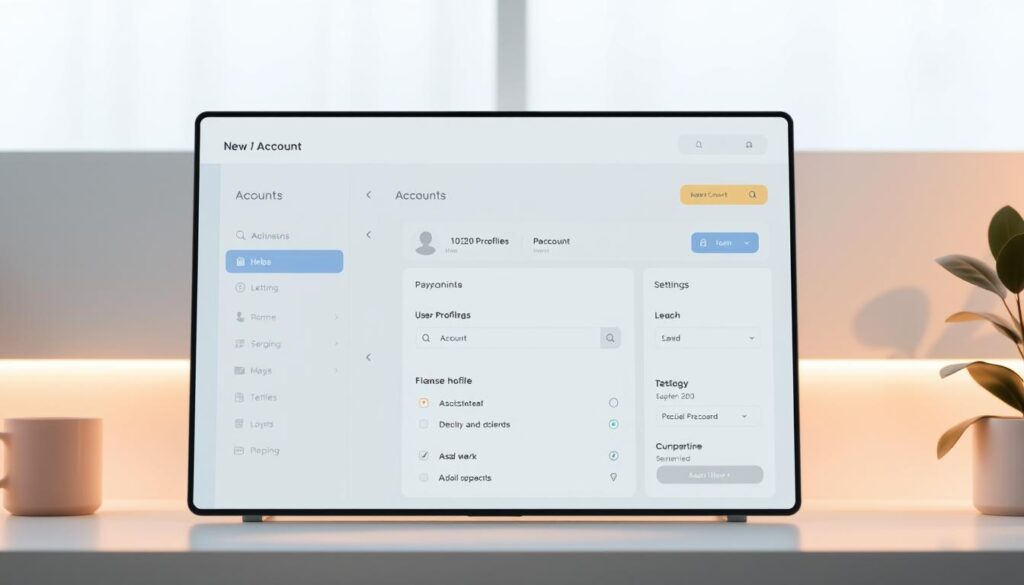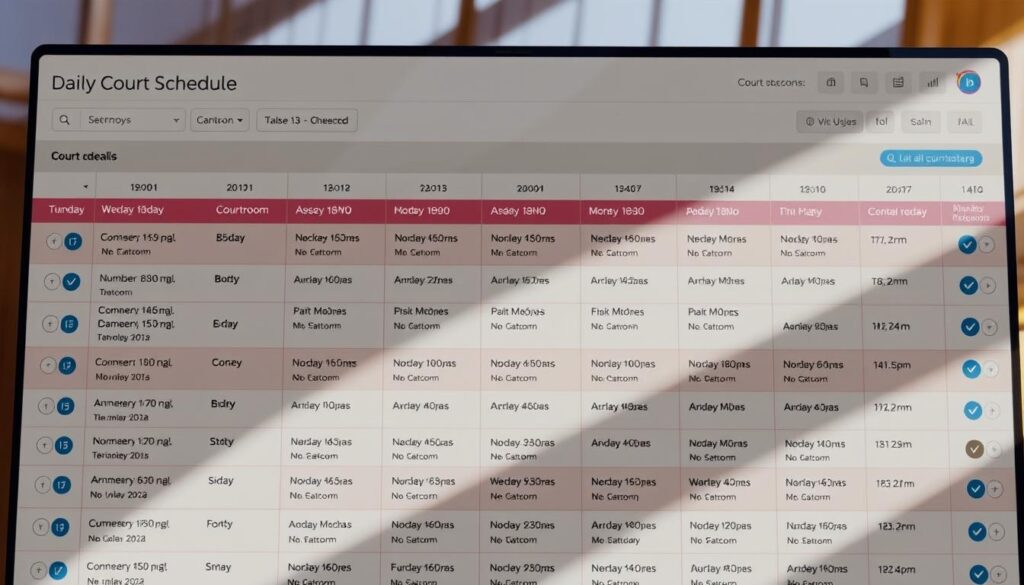Did you know over 90% of court documents in Ontario remain accessible under the open court principle? This foundational rule ensures transparency while balancing privacy needs. Whether you’re researching property history or legal cases, understanding how to navigate these systems unlocks valuable insights.
You can request various types of documentation through provincial channels. Land registrations, criminal case files, and family court decisions all fall under publicly available materials. Certain restrictions apply based on publication bans or specific legal protections, but most requests follow straightforward procedures.
The shift to digital platforms has simplified access to many records. Online portals now handle property searches and some court filings. However, older documents or sensitive cases might still require written applications or in-person visits to government offices.
Knowing where to start saves time and effort. Each category has unique requirements – from authentication steps to processing fees. For example, criminal record checks involve different authorization levels than accessing civil court decisions. Always verify which department manages your desired information before submitting requests.
This guide clarifies the most efficient pathways to obtain what you need. You’ll learn how different systems operate, what limitations exist, and how recent technological changes affect your search process.
Overview of Ontario Public Records
Open access to court files ensures accountability in the justice system. These materials help verify legal decisions, track property ownership, and monitor government operations. Their availability supports informed citizenship while protecting sensitive details through controlled access protocols.
Purpose and Scope of Public Records
Legal documentation serves two main roles: preserving history and enabling oversight. Criminal trials, civil disputes, and land registrations all generate paper trails managed by provincial offices. For example, you can review hearing dates or property deeds without formal requests in many situations.
| Record Type | Access Method | Common Use Cases |
|---|---|---|
| Criminal Cases | Online portals/Email | Background checks, legal research |
| Property Registrations | In-person requests | Real estate transactions, ownership verification |
| Family Court Files | Written applications | Child custody disputes, divorce proceedings |
Relevancy to Crime and Courthouse Data
Court schedules and verdicts aren’t just for lawyers. Journalists use them to report on safety trends, while researchers analyze case outcomes. Even landlords might check tenant histories through authorized channels.
Daily dockets and case numbers let you follow proceedings step-by-step. Staff at courthouses must provide guidance on locating files, though some restrictions apply for sealed documents or youth cases.
How Ontario Canada Public Records Are Managed

Two primary judicial bodies handle different case types while maintaining transparency. The Ontario Court of Justice deals with provincial offences and family law matters, while the Superior Court addresses serious criminal charges and civil disputes. This division creates clear pathways for managing case files and preserving accountability.
Government Oversight and Court System Access
Dedicated administrative teams archive materials according to strict protocols. For example, Small Claims Court decisions get stored separately from youth criminal records. “Openness remains essential unless laws dictate otherwise,” notes a provincial guideline. Digital databases now store recent filings, though older physical documents require visits to courthouse archives.
Public Access Principles and Restrictions
You can view most trial outcomes and property registrations, but certain situations limit availability. Publication bans automatically seal details in cases involving minors or national security. Even when accessing files online, sensitive data like witness addresses gets redacted to protect privacy.
Courts balance these needs through tiered authorization levels. Background checks might need notarized consent forms, while reviewing divorce decrees could require proof of relationship. Always check current rules through official portals before requesting information.
Steps to Search ontario canada public records

Efficient searches begin with strategic use of specialized platforms. The provincial Ministry’s digital search tool streamlines criminal case lookups through multiple filters. You’ll need a ONe-key account to start – this secure login protects sensitive legal data while enabling precise queries.
Using Search Tools Effectively
Start by selecting your document category. Criminal files require different methods than property registrations. Enter partial names or exact case numbers if available. The system accepts birth years and courthouse locations to refine results. Always double-check spelling variations – “Smith” might appear as “Smyth” in older records.
Filtering by Date, Location, and Case Type
Narrow results using three key filters:
- Date ranges: Isolate recent hearings or decade-old verdicts
- Court venues: Target specific jurisdictions
- Case categories: Separate criminal charges from civil disputes
Struggling to find files? Broaden your date parameters or try neighboring locations. Court staff can explain local numbering systems when digital searches hit roadblocks. Remember: complex requests might need in-person follow-ups for physical archives.
Accessing Crime and Court Documents in Ontario
Locating legal documents requires knowing where to look and what’s accessible. Online systems handle most criminal cases with upcoming hearings or recent activity. You’ll find case titles, courtroom numbers, and hearing dates through provincial platforms – but rules vary by document type.

Finding Criminal Case Files and Court Listings
The court search tool displays active adult criminal matters with future dates or warrants from the past five years. Enter a name or case number to view locations and charges. “Youth criminal matters remain sealed to protect minor identities,” states Section 110 of the Youth Criminal Justice Act. Always verify if your search involves sensitive age groups.
| Case Type | Access Method | Key Details |
|---|---|---|
| Adult Criminal | Online Search | Names, charges, next hearing |
| Family Law | Daily Court Lists | Excludes confidential orders |
| Provincial Offences | Municipal Offices | Parking tickets, bylaw violations |
Discovering Family Law and Provincial Offences
Daily court lists show family proceedings but hide applications with privacy orders. You might see case names and room numbers without sensitive details. For provincial offences like traffic tickets, contact local courts directly – these don’t appear in standard systems.
Need specific files? Have case numbers or full names ready. Searches without exact matches often fail. Courthouse staff can explain search filters if digital tools confuse you. Remember: youth matters and sealed documents stay off-limits without legal authorization.
Registering and Managing Your Account for Public Records
Securing access to legal documentation starts with proper account setup. Two primary systems handle sensitive data: ONe-key for criminal case searches and Teranet for property registrations. Each requires distinct authorization steps to balance security with transparency.

Setting Up and Verifying Your Account
Begin by creating a ONe-key through the government’s secure portal. This single login grants access to court case tools and other services. You’ll provide basic details like your name and birthdate, followed by email verification.
Some services demand extra steps. Land registration access needs approval from the Director of Land Registration. Submit the required form with professional credentials or business licenses. Most approvals take under 10 business days.
Renewal and Authorization Processes
Authorizations don’t last forever. Teranet accounts remain active for five years, but you must renew them 30 days before expiration. Missing deadlines could freeze your access to critical property records.
Keep contact details current in both systems. Change passwords regularly and watch for renewal notices. “Timely updates prevent disruptions,” advises a provincial cybersecurity guide. Complex cases might require re-submitting application forms to confirm eligibility.
Exploring Ontario Court Justice and Daily Court Lists

Court schedules in Ontario update every 15 minutes during business hours, yet nearly 12% of cases never appear publicly. These real-time lists show criminal and family proceedings across all court locations. You’ll find case names, courtroom numbers, and hearing purposes – but weekend criminal sessions and last-minute additions stay hidden.
Navigating Daily Court Schedules
Start by selecting your preferred courthouse location through the online portal. The system displays hearings scheduled within the next three business days. Three elements help filter results:
- Time windows: Narrow searches to morning or afternoon slots
- Case categories: Separate bail hearings from sentencing dates
- Participant roles: Identify defendants versus witnesses
Missing a case? Check after 8:45 AM for same-day updates. Youth matters and sealed files won’t appear, even if you know case details.
Understanding Court Case Numbers and Details
Each file uses a standardized numbering system. A typical criminal case number looks like: CR-2024-01234-ON. The components break down as follows:
| Segment | Example | Meaning |
|---|---|---|
| Case Type | CR | Criminal proceeding |
| Year Filed | 2024 | Initiation year |
| Sequence | 01234 | Unique identifier |
| Location | ON | Ontario Court code |
These codes help staff locate physical files in archives. When tracking multiple cases, create a spreadsheet with numbers and next hearing dates. Remember: family law files use different prefixes like FL-2024-05678.
Practical Tips for Successful Public Records Searches
Effective record retrieval hinges on understanding digital tools and their constraints. Many assume search systems hold unlimited historical data, but most focus on active or recent cases. Knowing these limits helps avoid wasted efforts and directs energy toward viable sources.
Best Practices for Querying Multiple Sources
Start with the freshest data. Systems prioritize current cases, so working backward from recent entries often yields better results. Track your progress with a simple spreadsheet – note dates searched, keywords used, and outcomes.
| Search Tool | Timeframe Covered | Access Type |
|---|---|---|
| Criminal Case Portal | Active cases + 7 days past | Online |
| Property Registry | All historical records | In-person/Email |
| Court Direct Line | Real-time updates | Phone |
Troubleshooting Common Search Issues
Stuck? Try these fixes:
- Name variations: Search “Jon” and “John”
- Date expansion: Widen your window by 30 days
- Jurisdiction checks: Confirm which court handled the case
When digital methods fail, call the courthouse. Staff often uncover details automated systems miss. “Phone inquiries resolve 40% of stalled searches,” reports a recent efficiency study. Always have case numbers ready to speed up the process.
Staying Updated with Government Notices and Procedures
Legal systems evolve constantly, making proactive updates essential for effective searches. Changes to access rules or document availability often occur without broad announcements. You’ll want reliable methods to track these shifts as they happen.
Monitoring Changes to Court Access Regulations
Bookmark official government websites for your region. Many post policy updates under “Latest News” sections. Subscribe to email lists from court services – these often detail procedural changes affecting how you request files.
Check weekly for amendments to publication bans or access tiers. Recent reforms might alter what’s visible online versus in-person. Staff at local courthouse offices can clarify new requirements during business hours.
Utilising Email and Web Tools for Alerts
Enable notifications through digital platforms managing case searches. Some systems send automatic emails when court dates change or new documents get filed. Create filters to prioritize updates about specific cases or locations.
For time-sensitive matters, contact office staff directly via email. Include case numbers and your relationship to the file. Responses typically arrive within past 2-3 business days. Always save confirmation receipts for future reference.

